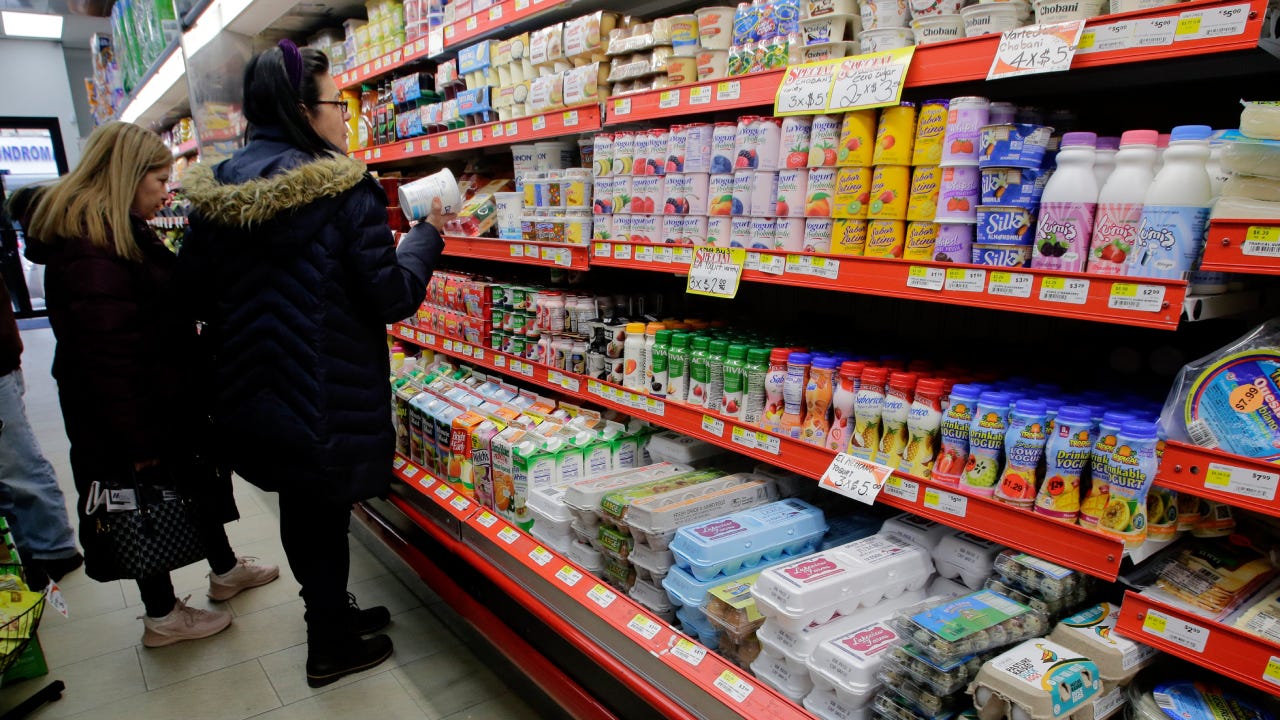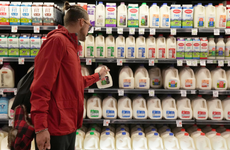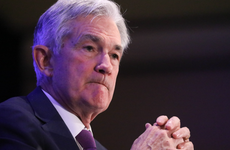Survey: Inflation to keep decelerating — but at the price of a slowing economy

The Bankrate promise
At Bankrate we strive to help you make smarter financial decisions. While we adhere to strict , this post may contain references to products from our partners. Here's an explanation for .
The hottest inflation in 40 years is projected to keep cooling this year, but consumers could still feel pinched by higher prices, according to a Bankrate survey of economists.
An overwhelming majority of economists (or 88 percent) in Bankrate’s First-Quarter Economic Indicator poll project that inflation will continue decelerating over the next 12 to 18 months. Just one economist said inflation will remain steady, suggesting those hot price pressures won’t cool from the highest level in 40 years. No economists, however, predicted that inflation would reaccelerate.
Consumers are bound to welcome that news, with some estimates suggesting they’ve had to pay about $400 more a month for the same goods and services they would’ve purchased a year ago. Yet, economists point out that inflation is unlikely to slow from its current 6 percent level to the Fed’s preferred gauge of 2 percent. They also say taming those high prices could require more than a slowing economy — but possibly a recession.
Federal Reserve officials have indicated that they believe their war on inflation is being won, but it isn’t over yet. Similarly, economists see price pressures waning over the next year or so. If that happens, it provides consumers with much-needed relief. On the other hand, the collateral damage from the Fed’s rate hikes could include a recession.— Mark Hamrick, senior economic analyst at Bankrate
Key takeaways:
- Fed seen lifting rates two more times before cutting in 2024
- Inflation to keep decelerating this year as economy slows from high interest rates
- Odds of a recession in 2023 hover at 64% amid bank failures and higher rates
- Economists see jump in unemployment and major job losses over next 12 months
Inflation is projected to keep slowing — but economists say it might not happen fast
Consumer prices have come a long way since the Fed started raising interest rates — though the slowdown hasn’t happened quickly. Inflation peaked at 9.1 percent in June 2022 and fell to 6 percent by February. In that timeframe, the Fed had taken interest rates all the way from 0-0.25 percent to a new target range of 4.5-4.75 percent, the fastest pace in 40 years.
What was first a story of supply bottlenecks and shortages impacting goods, food and energy is now a story of rising housing costs and services inflation. Gasoline prices fell 2 percent in February from a year ago, reflecting cheaper prices at the pump. Grocery prices have declined every month since August, even if they’re still uncomfortably high.
Shelter, however, accounted for 70 percent of inflation in February, according to the Department of Labor. Rent soared 8.8 percent in February, the biggest price burst since 1981. Services jumped 7.3 percent, the biggest gain since 1982.
“The impact on inflation from energy will come off quickly this year and the impact from shelter will take a bit longer,” says Dante DeAntonio, director of economic research at Moody’s Analytics. “Overall, inflation will approach 3 percent on a year over year basis by the end of 2023 and fall further in early 2024.”
Real-time indicators suggest some of those price increases are already starting to slow. Rent in January rose by the smallest amount in 20 months, according to Rent.com. Meanwhile, higher interest rates may be cooling demand enough that supply is beginning to catch up from shipping and manufacturing snarls. Used car prices, for example, were nearly 14 percent cheaper in February than they were a year ago, according to data from the Department of Labor.
“The bulk of the steep price climb through 2021 and 2022 for many goods and services reflected breaks in global supply chains that have taken longer than expected to repair,” says Mike Englund, chief economist at Action Economics. “We expect supply chain bottlenecks to dissipate over the coming year as growth slows, and this should allow price reversals that dampen growth sharply for the headline inflation gauges.”
The Fed, however, might want more evidence that inflation is settling back in on its 2 percent target before loosening the reins. An exceptionally tight labor market might be to blame for today’s stubborn inflation, Fed Chair Powell has said, as employers raise wages to lure more workers.
Policymakers see their own preferred inflation gauge — the personal consumption expenditures (PCE) index — cooling to 3.3 percent, well above their 2 percent objective, according to their projections from March.
“Inflation may slow but not come anywhere near the Fed’s 2 percent target,” says Nayantara Hensel, chief economist at Seaborne Defense, who is the one economist projecting inflation will remain steady. “Indeed, the Fed may not get back to 2 percent for at least two if not three years without a moderate recession occurring.”
Hear from the experts
Inflation will slow somewhat further and then hold steady — well above the Fed’s target, with the risk to the upside.
— Lindsey Piegza, Ph.D., chief economist at Stifel
Shelter costs and wage growth are the twin engines that drive inflation now. As rents and home prices continue to fall, and the labor market settles into a supply/demand equilibrium, inflation will drop to between 2-3 percent.
— Robert Frick, corporate economist at Navy Federal Credit Union
Supply chains continue to improve. The coming recession will put additional downward pressure on price increases as consumers and businesses reduce their demand for goods and services.
— Bernard Markstein, president and chief economist at Markstein Advisors
-
The First-Quarter 2022 Bankrate Economic Indicator Survey of economists was conducted March 23-30. Survey requests were emailed to economists nationwide, and responses were submitted voluntarily online. Responding were: Odeta Kushi, deputy chief economist, First American Financial Corporation; Yelena Maleyev, economist, KPMG; Scott Anderson, chief economist, Bank of the West; Nayantara Hensel, Ph.D., chief economist, Seaborne Defense; Joel L. Naroff, Naroff Economics; Mike Fratantoni, chief economist, Mortgage Bankers Association; Robert Frick, corporate economist, Navy Federal Credit Union; John E. Silvia, CEO and founder, Dynamic Economic Strategy; Dante DeAntonio, director of economic research, Moody’s Analytics; Bernard Markstein, president and chief economist, Markstein Advisors; Lawrence Yun, chief economist, National Association of Realtors; Robert Brusca, chief economist, Fact and Opinion Economics; Bill Dunkelberg, chief economist, NFIB; Gregory Daco, chief economist, EY; Lindsey Piegza, Ph.D., chief economist, Stifel; Eugenio J. Alemán, Ph.D., chief economist, Raymond James Financial; and Mike Englund, chief economist, Action Economics.
Related Articles

What is inflation? Here’s how rising prices can erode your purchasing power

Survey: More than half of economists say surging inflation will climb much higher than expected

Survey: Has inflation peaked? Here’s what the nation’s top economists say

Will the Fed cause a recession by raising rates? Here’s what experts are saying